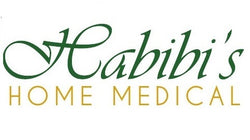Adult incontinence is a condition that affects millions of people around the world. It is a condition that can be embarrassing and frustrating for those who suffer from it, but it is important to understand that it is a common problem that can be managed with proper treatment.
What is adult incontinence?
Adult incontinence is a condition in which a person is unable to control their bladder or bowel movements. This can result in leakage or full loss of urine or feces. The severity of the condition can vary from person to person, with some experiencing occasional leaks and others experiencing full loss of bladder or bowel control.
What causes adult incontinence?
There are many factors that can contribute to adult incontinence. Some of the most common causes include:
- Weak pelvic floor muscles: The muscles that support the bladder and bowel can become weakened over time, leading to incontinence.
- Age: As we age, our bladder and bowel muscles can become weaker, which can contribute to incontinence.
- Chronic medical conditions: Conditions such as diabetes, multiple sclerosis, and Parkinson's disease can affect bladder and bowel control.
- Medications: Certain medications can increase the risk of incontinence.
- Urinary tract infections: UTIs can cause temporary incontinence.
- Pregnancy and childbirth: The pelvic floor muscles can become weakened during pregnancy and childbirth, leading to incontinence.
Types of adult incontinence
There are several types of adult incontinence, including:
- Stress incontinence: This is the most common type of incontinence, which is caused by pressure on the bladder from physical activities such as sneezing, coughing, or exercising.
- Urge incontinence: This is caused by an overactive bladder and a sudden urge to urinate.
- Overflow incontinence: This occurs when the bladder is unable to empty properly, causing it to overflow and leak.
- Functional incontinence: This occurs when a person is physically unable to get to the bathroom in time due to mobility issues or other physical limitations.
- Mixed incontinence: This is a combination of two or more types of incontinence.
Managing adult incontinence
There are several treatments available for adult incontinence, depending on the cause and severity of the condition. Some of the most common treatments include:
- Pelvic floor exercises: Strengthening the pelvic floor muscles can help improve bladder and bowel control.
- Medications: Certain medications can help reduce the symptoms of incontinence.
- Surgery: In some cases, surgery may be necessary to correct the underlying issue causing incontinence.
- Lifestyle changes: Making changes to your diet, fluid intake, and physical activity levels can help manage incontinence.
- Incontinence products: There are several products available, such as pads and adult diapers, that can help manage leaks and accidents.
It is important to remember that adult incontinence is a common problem that can be managed with proper treatment. If you are experiencing symptoms of incontinence, talk to your healthcare provider about the best treatment options for you. With the right treatment, you can improve your quality of life and regain control over your bladder and bowel movements.






